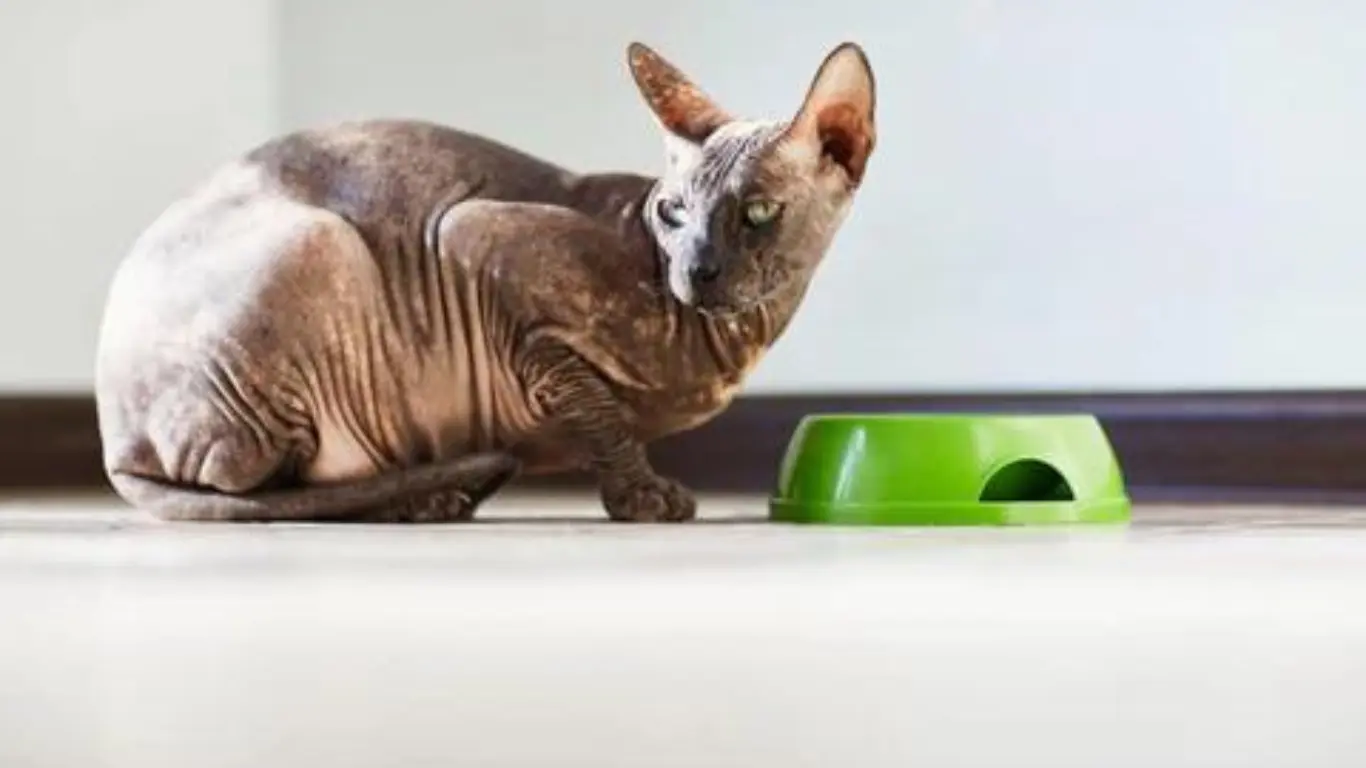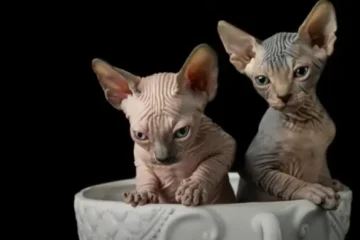Sphynx cats are unique in many ways, from their hairless bodies to their energetic and playful personalities. But like any other pet, they sometimes face health problems, and one common issue is vomiting. If you’re a concerned pet parent, you might be asking, “Why is my Sphynx cat throwing up?” This article will guide you through the possible causes, solutions, and preventive measures.
Common Causes of Vomiting in Sphynx Cats
1. Dietary Issues
One of the most common reasons Sphynx cats throw up is related to their diet. These cats are sensitive to what they eat. If your Sphynx has suddenly started vomiting, consider any recent changes to their food. Introducing new food too quickly or feeding them something they can’t digest can cause vomiting.
Related symptoms:
- Diarrhea
- Loss of appetite
- Lethargy
2. Hairballs
You might think that hairless cats don’t get hairballs, but that’s a misconception. Sphynx cats still groom themselves and can ingest tiny amounts of fuzz or debris. Over time, this builds up in their stomach and can result in vomiting as the body tries to expel it.
Related symptoms:
- Coughing or gagging
- Vomiting once or twice a week
3. Allergies
Sphynx cats can suffer from food or environmental allergies. Common allergens in cat food include grains, certain proteins, or preservatives. If they have an allergic reaction, vomiting might occur.
Related symptoms:
- Skin irritation or rashes
- Excessive scratching
- Sneezing
4. Gastrointestinal (GI) Issues
GI problems like infections, parasites, or inflammatory bowel disease (IBD) can also lead to vomiting. Parasites, such as roundworms or hookworms, are common culprits in young cats. GI infections can upset your cat’s stomach, causing them to vomit frequently.
Related symptoms:
- Weight loss
- Blood in vomit or stool
- Diarrhea
5. Eating Too Quickly
Sphynx cats are known to have big appetites, and sometimes they eat too fast. When a cat gobbles down food too quickly, it can trigger vomiting. This is often called “scarf and barf.”
Related symptoms:
- Vomiting shortly after eating
- Undigested food in vomit
6. Stress and Anxiety
Changes in the environment, such as moving houses or introducing a new pet, can cause stress for your Sphynx. Stress and anxiety can lead to digestive problems, including vomiting.
Related symptoms:
- Hiding or unusual behavior
- Loss of appetite
- Excessive grooming
7. Toxins or Foreign Objects
Cats are curious creatures, and sometimes they ingest things they shouldn’t. This could include toxic plants, cleaning products, or small objects like toys. If a foreign object is stuck in your Sphynx cat’s digestive tract, they may vomit frequently.
Related symptoms:
- Difficulty breathing
- Excessive drooling
- Abdominal pain

How to Help Your Sphynx Cat When They’re Vomiting
If your Sphynx cat is throwing up, it’s essential to address the issue promptly. Here are some steps to help them:
1. Change Their Diet Gradually
If you suspect food is the issue, switch to a high-quality cat food that doesn’t contain any harmful ingredients. Always make dietary changes gradually over a week or so to avoid shocking your cat’s system.
2. Monitor Their Eating Habits
If your Sphynx tends to eat too fast, try feeding smaller portions more frequently throughout the day. You can also use a slow feeder bowl to help them pace their eating.
3. Keep Their Environment Calm
If stress is causing your Sphynx to vomit, try to create a calm, stable environment. Avoid major changes all at once, and provide hiding spots or safe spaces where your cat can retreat.
4. Hydration is Key
Vomiting can lead to dehydration, so ensure your cat has access to plenty of fresh water. If they’re vomiting frequently, you may need to consult a vet about intravenous fluids.
5. Regular Vet Visits
Regular check-ups can help catch any underlying health issues early. If vomiting becomes persistent or your cat shows other symptoms like weight loss or lethargy, a vet visit is necessary.
Preventing Future Episodes of Vomiting
1. Feed a Balanced, High-Quality Diet
Ensure your Sphynx cat is eating a well-balanced, nutritious diet. High-quality cat food with real meat and fewer fillers is essential for their overall health.
2. Stick to a Routine
Cats thrive on routine. Feed them at the same time every day and keep their environment as consistent as possible to minimize stress.
3. Use Hairball Remedies
Even though Sphynx cats don’t have fur, they can still benefit from hairball prevention treatments. Using special hairball remedies or increasing their fiber intake can help their digestive system.
4. Regular Grooming
While they don’t have fur, Sphynx cats still need regular grooming to keep their skin healthy. Bathing them once a week can prevent the buildup of oils, which they might ingest while grooming.
When Should You Worry?
Sometimes vomiting is a sign of a more serious condition. If your Sphynx cat vomits more than once a week, or if the vomit contains blood or bile, it’s time to see a vet. Other warning signs include weight loss, diarrhea, and behavioral changes.
1. Chronic Vomiting
If your Sphynx is vomiting regularly, it could point to a chronic condition like IBD or a food intolerance.
2. Blood in Vomit
Blood in vomit can be a sign of internal bleeding, ulcers, or severe gastrointestinal issues. This needs immediate medical attention.
3. Persistent Lethargy
If your cat is not only vomiting but also showing signs of lethargy or lack of energy, they may be dealing with a severe health issue.
Conclusion
Vomiting in Sphynx cats can be concerning, but understanding the potential causes can help you address the issue effectively. Whether it’s diet, stress, or a more serious health concern, paying attention to your cat’s symptoms and behavior is crucial. Always consult a vet if you’re unsure about your Sphynx’s health. By providing a stable environment, a proper diet, and regular care, you can help prevent future episodes and keep your Sphynx cat healthy and happy.




